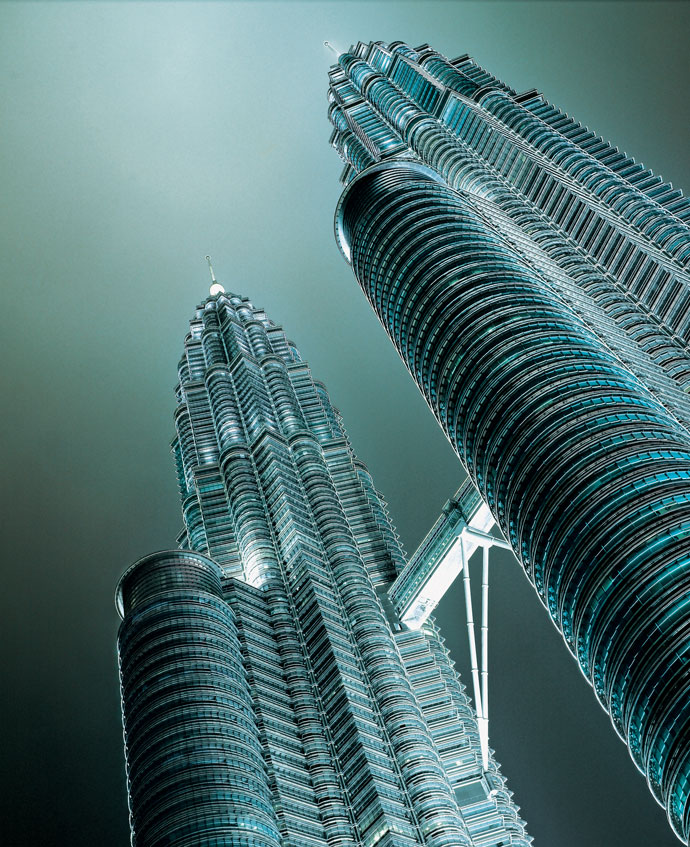How did Malaysia outperform South Korea in a recent global competitiveness ranking?
How did it perform better than Germany, Japan and Taiwan in another, measuring ease of doing business? In the first case, Malaysia ranks 21st in the World Economic Forum’s Global Competitiveness Report, beating South Korea by three places. The World Bank’s Doing Business Report ranks Malaysia 18th, ahead of Germany (19th), Japan (20th) and Taiwan (25th). These are significant markers on Malaysia’s road to becoming a high-income economy based on growth industries stocked with highly skilled workers. Progress on this road translates into a business climate that helps companies succeed.
Executives from multinationals in locations from Penang and Kedah in the north to Selangor and Negeri Sembilan in central peninsular Malaysia to Johor Bahru and the broader Iskandar region in the south make similar points when asked what makes them successful in this Southeast Asian country.
They are (1) predictability that allows MNCs to establish and expand operations in the context of the English legal and commercial system, which is transparent, fair and familiar to most foreign investors; (2) political and social stability, despite being a predominantly tri-racial society (Malays, Chinese and Indians) that has largely been in place since independence from Great Britain in 1957; (3) a geographic location in the heart of Southeast Asia and equidistant to China and India — Asia’s two largest and fastest-growing markets; (4) a largely English-speaking population, which is attractive to Western corporate investors and a feature not to be found in most other countries in the region; and (5) world-class infrastructure — ports, airports, highways and bridges — that facilitate global commerce.
But back to the rankings, which are good news indeed for Datuk Noharuddin Nordin, CEO of the Malaysian Investment Development Authority and his staff. He explains their significance: “The reports from WEF and the World Bank are a good barometer to measure a country’s economic health. Improvements in competitiveness and ease of doing business rankings show that a country is on the right track to achieving economic success, particularly in uncertain times,” he says.
“Second, the rankings also confirm that Malaysia’s economic reforms are being received positively by the global market. More importantly,” he adds, “competitiveness indices also demonstrate an economy’s growth potential. Malaysia’s performance in these rankings is a clear sign the economy is on the right track and that we should be redoubling our efforts. Of course, despite these rankings we expect companies to do their own due diligence before they decide to invest anywhere. Malaysia’s best days are ahead of it, but only if its people work together to realize its potential and continue the process of transformation that has already begun.”

Even higher rankings are possible in the future as steps are taken by the government to revamp delivery services, lower business costs and increase transparency, the MIDA CEO maintains. Focusing on targeting knowledge-based, higher-income industry sectors, such as aerospace, advanced electronics, creative industries, biotechnology and renewable energy development and production will help bring this about. “Innovation and creativity are now key economic drivers,” he explains. “Countries that consistently top the competitiveness rankings like Switzerland, Singapore and Sweden have continuously demonstrated the ability to innovate and use high technology to create better goods and services. One way we could do this is by encouraging collaboration between academia and industry to not only facilitate research and development but also make its outcomes marketable.” They must work together on another important matter, too.
Executives at high-tech companies in Malaysia routinely make the point that they can find most of the engineering talent they require locally, but must regularly look outside Malaysia for some high-end workers. This reporter has met with executives in Malaysia on four occasions now and can attest to greater collaboration between companies seeking to grow and colleges and universities supplying their work force. Companies not yet in Malaysia need assurance that they can tap a deep enough labor pool and find the skill sets they require before they make the commitment to invest. The high number of high-tech firms expanding in Malaysia is evidence that the labor pool is sufficiently populated.
Meanwhile, MIDA’s role in Malaysia’s economic transformation is evolving to include new, more proactive investment promotion activities.
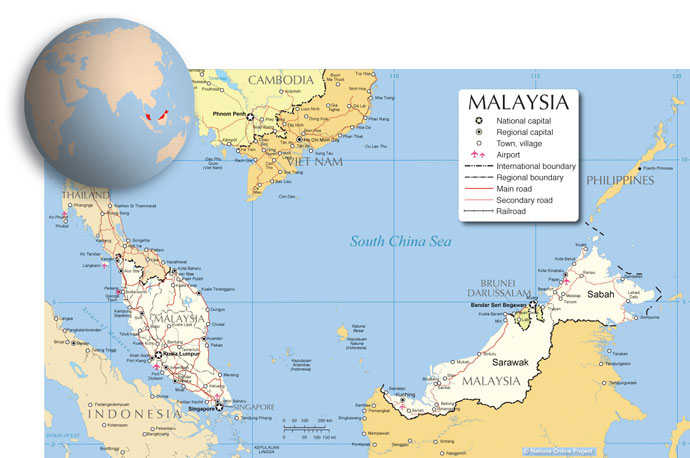
“MIDA has been empowered by the government with the necessary authority to negotiate directly with investors for targeted projects,” says Datuk Noharuddin. “Along with the empowerment, a National Committee on Investments was established in MIDA to enable its officers to evaluate investment projects and to grant decisions in real time.” MIDA will also play a greater role in advising the government in the formulation of investment policies. MIDA’s new direction is captured in a new corporate logo introduced in July, but the significance of this new direction is much more profound.
Foreign site selectors will now see more of an emphasis on Malaysia as a destination for high-tech investment, enhanced coordination of investment promotion activities and a deeper focus on cultivating high-tech investment and projects in knowledge-intensive industry sectors — aerospace, for example.
Human Capital Development: A Public-Private Priority
Strand Aerospace (Malaysia) Sdn Bhd, based in Cyberjaya, is an engineering company that provides analysis of aircraft structural components to Airbus and other aircraft manufacturers and is a growing employer of Malaysia’s engineering talent. Early on — the company began operations in 2006 — Strand had 500 to 1,000 responses to each advertisement placed for new hires, says Naguib Mohd Nor, chief operating officer.
“Malaysia produces about 50,000 engineering graduates from its local universities each year,” he explains, “about 30 percent of whom are mechanical engineers.” Many were not applying their expertise due to a lack of openings. But Strand and others seek engineers with more than just a degree — they require critical thinking skills and leadership capability and an appreciation of ethics — of doing something right, not just on time. Strand built an in-house training program to cultivate these qualities in its engineering staff, says Naguib. “We worked on how they were thinking, but we also gave them an environment where that thinking can thrive. We gave them responsibility but also provided strong support.”
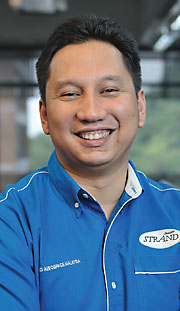
Other aerospace companies took notice of Strand Aerospace’s engineers, and sent their hires to Strand for training. The program has since been adopted by the government as a way of accelerating the development of Malaysia’s engineering community. “It’s the added-value thinking that was missing in different industries, preventing their migration to a more services-oriented focus from a commodity basis,” as called for in Malaysia’s Economic Transformation Program, explains Naguib.
Strand and two other companies have been working with the government, which provides training grants and funding for IT, since 2010 to cultivate a new generation of engineering talent. Aerospace trainees now are largely hired by Strand, but other companies will benefit from the initiative starting next year. “The idea is that after 2013, Malaysia will know how this industry works, how to supply the right manpower to industry, and will be an option to high-end engineers working in other countries. Malaysia will play a very important role in the coming years — it is English speaking, but people also speak all the languages of the region. We can target areas that will take the rest of the region some time to catch up on.”
Companies will notice this new supply of high-end engineering talent that Naguib is helping put in place, which will put Malaysia’s aerospace industry on the fast track in due course. Companies in other industries benefit from Ministry of Human Resources funding, particularly strategic industries, so aerospace is not an island in this respect. “But it is an ecosystem that needs to be built,” says Naguib. “Aerospace in Malaysia is a foregone conclusion. We have so much momentum and a 25-year history in aerospace composites, which is a huge part of the manufacturing of the latest aircraft. Malaysia is a key place to develop your manufacturing capability from a base that is already established. The maintenance side is here, and the R&D capability is now growing, too.”
This industry growth is critical for two reasons — to meet Economic Transformation Plan targets for high-income industry sectors by 2020 and to be a player in the global aerospace industry’s next supply chain iteration, which will include Southeast Asia. “We must be clear about what Malaysia is doing in order to be a part of that,” says Naguib, adding that the country’s aerospace sector is of a single mind about the importance of this. “We have everything to lose.”
Intellectual Property System Advances
In April 2012, Malaysia was removed from the U.S. watch list of countries committing IP rights violations. Malaysia has worked hard to strengthen its intellectual property (IP) protections in recent years, giving investors a higher degree of confidence, particularly IT and high-tech investors. Steps taken include:
- Passage of the Copyright (Amendment) Act of 2012, which took effect March 1;
- Launch of the National Intellectual Property Policy in 2007, ensuring that IP returns are maximized and establishing an environment that encourages creation of IP and benefits Malaysia socio-economically;
- Establishment of the International Property Court in 2007 with criminal jurisdictions in each state and High Courts with civil and appellate jurisdiction;
- Participation in international IP treaties and membership in The World Intellectual Property Organization (WIPO), a U.N. agency dedicated to promoting the use of intellectual property as a means of stimulating innovation and creativity; and
- Signatory to the Trade Related Aspects of Intellectual Property Rights (TRIPs) Agreement administered by the World Trade Organization, establishing minimum levels of IP protection that each government must give to WTO members — WTO deemed Malaysia’s IP laws TRIPS-compliant in 2002.
In 2003, the Intellectual Property Division of the Ministry of Domestic Trade and Consumer Affairs was corporatized and renamed the Intellectual Property Corporation of Malaysia (MyIPO). The agency was tasked with administering, implementing and developing the IP rights system in Malaysia, which has been enhanced several times since. New services of MyIPO include a secure, web-based system for filing IP applications, an expedited examination for registration of patent and trade mark applications, new branch offices in three locations around the country and the introduction of the Copyright Voluntary Notification System that serves as the national database for copyright works in Malaysia.
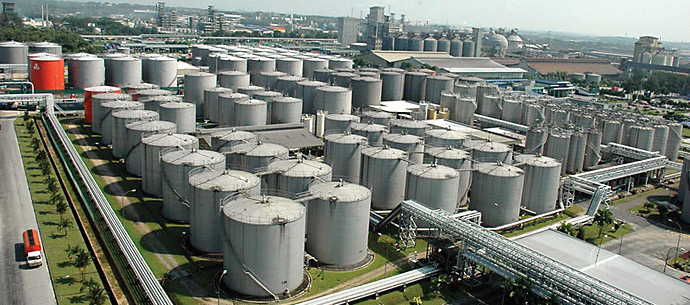
More measures are planned, according to MyIPO Director General Dato’ Azizan Mohamad Sidin. “Valuing and using IP in financing is a growing area in countries such as the U.S., China, Japan and Thailand. Our aim is to encourage development of an IP-based banking instrument for collateralization and securitization of IP assets in Malaysia.”
MyIPO is strengthening cooperation with state agencies to promote local IP registration efforts, he adds. “Malaysia is rich in resources and heritage. However, the level of awareness among local entrepreneurs is relatively low, and we need the state governments to assist us in promoting geographical indication registration to protect our heritage and our future generations.”
Six-Star Infrastructure:
Tenants Cite Dedicated Energy and Utilities, Local Permitting Approvals and the Labor Supply as This Park’s Chief Attributes
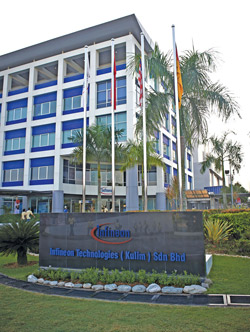
Several dozen companies have sited facilities in the north of Malaysia at Kulim Hi-Tech Park (KHTP) in Kedah, which affords close proximity to the seaport and airport on Penang, the industrial yet historically significant island off the country’s northwest coast that has drawn tourists as well as corporate investors for decades. A second bridge between the island and the mainland is nearing completion that will expedite movement from KHTP to Penang.
Companies in several sectors stand to benefit from specific incentives when locating at the park. These sectors are wafer fabrication and related activities, semiconductors, alternative energy, advanced materials and electronics, medical and scientific instruments, process control and automation equipment, optoelectronics, biotechnology, advanced materials and aerospace. The park has expanded its footprint with new phases in recent years to 4,300 acres from 3,600 acres. Phase four commenced in July, which will add 400 additional acres.
“We are concerned about who will be our tenant neighbor, because the sectors we are promoting are selected very carefully,” says Muhamad Sobri Osman, president of KHTP. The park seeks clean-tech companies that employ skilled labor and discourages interest from heavy industry, including a motorcycle manufacturer in recent months that tried in vain to secure a site at the park.
Sobri says a distinguishing feature of KHTP is its infrastructure: “It’s six-star, but our tenants pay for four-star.” Wafer fab and other tenant’s electricity requirements are very stringent, he relates, which is why the park operates its own power plant. “We have our own water treatment plant, too, which differentiates our park from others. We also have our own local authority for facilitating permit applications.”
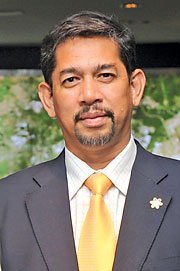
Recent expansions in the park include a RM4-billion (US$1.2 billion) project at Infineon Technologies (Kulim) Sdn Bhd and Panasonic, which is increasing its overall investment from RM1.8 billion ($577,000) to RM4.5 billion ($1.4 billion). French glass maker St. Gobain has located in the park to supply its main customer, First Solar, which operates several plants at KHTP. Japanese electronics giant Fuji operates three facilities at the park — for electronics, semiconductor production and logistics. Sobri reports that Fuji has recently relocated is R&D work force from Japan to Kulim — “an achievement we are quite proud of.”
KHTP’s work force is north of 26,000, Sobri relates, but he is confident assuring potential investors that the area can provide new workers from several local universities and an on-site vocational tech school that is set to open in 2013. “I encourage the universities and colleges to have a flexible buffer in their syllabi to include materials that would make our location more attractive to industries here or considering a location here.”
High-Tech Haven
Panasonic operates numerous facilities in Malaysia but its Panasonic Energy Malaysia Sdn Bhd unit is expanding photovoltaic solar panel production at Kulim Hi-Tech Park for several reasons, according to Chiaki Kidani, managing director. “The first is its very good infrastructure, including power supply, and another is the park’s very helpful management. The park is very familiar with the requirements of the semiconductor industry, particularly a stable power supply, and this location could deliver a more reliable energy supply than other locations we analyzed.”
Panasonic’s end products will mainly be used in the residential market and will be exported globally from Kulim, primarily via the seaport at Penang. But even logistics takes second place to reliable power as a criterion for locating the new production line. Another advantage of the park, relates Kidani, is the short time in which the facility will be operational — just 12 months from when the location selection was finalized, and nine months from the onset of construction, which he attributes partly to Panasonic’s substantial footprint in Asia and partly to the cooperation of KTPC management and MIDA — the Malaysian Investment Development Authority.
Infineon Technologies is quite at home in Malaysia, with a presence in the country since 1973 — most notably a 7,000-worker operation in Malacca.

“Political stability here is predictable, with the country staying on track, following the visions of previous leaders who articulated the importance of doing whatever is necessary to achieve industrialization,” says Peter Halm, senior director and CFO. Malaysia’s adherence to the English corporate and legal systems and a large base of English-speaking workers is appealing to European companies, he adds. “Multinationals and other large investors don’t want a surprise. When we were looking in 2004 and 2005 for a location for another wafer fab, and the Kulim location was decided, labor costs also played a role. In China, labor-cost planning was unpredictable.” Infineon at KHTP requires more skilled labor than unskilled as two thirds of its employees are skilled, so Malaysia’s move to a higher-income economy benefits the company as more workers become available for such positions.
Infineon produces eight-inch semiconductor wafers and microchips at Kulim for energy efficiency systems producers, Tier 1 automotive suppliers and others. It’s initial investment in 2005 at the site was $1 billion, and a second fab is now under way that Halm says will trigger an investment of RM4 billion ($1.2 billion) over the next 10 years, depending on market conditions and market demand.
“The Kulim location is significant because we are close to Malacca,” says Halm, “where most of the technology produced here is sent. Also, Asia is extremely important to us in terms of sales — more than 40 percent of Infineon sales is from Asia, or more with Japan included. So it is wise to be here for production. The region provides a close link to the back end, and it has a labor-cost advantage. We should use this to leverage productivity in other areas — use of capacities and materials.
“MIDA has been very helpful, as well, in establishing our operations here,” notes Halm. “This area is familiar with our technology requirements, and the park’s relatively independent power is an advantage.” As for growing its work force as new operations come online, Halm says there will be a challenge finding the right workers in the right numbers, and that will require supplementing the domestic talent base with foreign workers, who tend to be well qualified by Infineon’s standards. Between that and working with local universities to prime the local work force, Halm is confident the company will find the roughly 1,000 workers required at the new facility in KHTP.
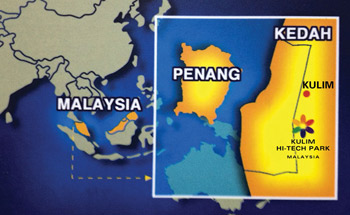
Meanwhile, he relates, Infineon’s culture of cleanliness in the clean room and outside it fits well at Kulim Hi-Tech Park, which he says takes seriously its role as host to so many high-tech companies. “As an investor in a high-tech park, I want to see orderliness. We have a zero-defect approach at Infineon Kulim — our culture is to do things right from the beginning. Customers confirm that they see this, and we must keep this on the minds of our people. It is quite good here on that point.”
On a broader note, Halm says it is crucial that industry and Malaysia communicate in order to further the interests of both parties. “I hope we are contributing to helping Malaysia build its image — one that differentiates it from other countries, especially China, in areas such as being a location for sustainable, environmentally conscious technology development. A focus on responsible, quality industrialization could help Malaysia position itself uniquely, where high income is the result of this focus.”
A Region Repurposed:
Project Sites Are Evidence ofRobust Economic Transformation
Regular visitors to Johor Bahru, at Malaysia’s southernmost point, can attest to the transformation under way in Iskandar Malaysia, the 2,217-sq. km. economic corridor surrounding Johor. Each year since 2007, new developments and infrastructure have emerged that are recasting this region into a global economic center. Business and commerce, leisure, education, medical and residential developments are under way or complete, and more are planned in Iskandar’s five zones.
Much of the Kota Iskandar state administrative complex is complete, as are residential projects and marinas at Puteri Harbour in Nusajaya, in Zone B. This area is also home to Asia’s first LEGOLAND theme park, which opens this fall, giving the region an important new leisure destination. Johor Premium Outlets opened recently in Senai, in Zone E, near the new Sultan Ismail International Airport, which is the anchor for an Airport City that will feature an aerospace park, free zone and a cargo and logistics park. In Zone A — Johor Bahru City Centre, The new Sultan Iskandar Customs, Immigration and Quarantine Complex is now complete. It expedites the inflow of workers, students and visitors from adjacent Singapore as new developments come online.
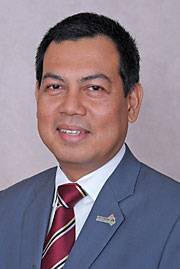
But even the new second crossing to Singapore won’t meet future cross-border traffic demand, predicts Datuk Ismail bin Ibrahim, chief executive of Iskandar Regional Development Authority (IRDA). “This is why we have announced a joint project, the Rapid Transit System that will create another link between Singapore and Iskandar. We are also working very hard with our Singapore counterparts on how to improve the crossing, and the CIQ is central to that.” Plenty more business will be coming to Iskandar, he asserts, so the infrastructure must be ready. “We are open to businesses coming to Iskandar, especially those that have a multiplier effect, causing other businesses to cluster around them, and that create the type of employment that generates knowledge workers and uses highly skilled labor. The point of creating Iskandar Malaysia is to transform this region into one of high income.”
Work-force supply has been central to Iskandar Malaysia’s future success since it’s early planning stages, says the IRDA chief executive. “It’s about supply and demand,” he says, “and creating an equilibrium — and some surplus to compensate for any leakage — at every stage of the planning and development and growth of this region.” This is why IRDA implemented a program called the Human Capital Development Program for Iskandar Malaysia. “This blueprint outlines the issues and gives a certain direction in which human capital needs to be addressed, not only in terms of calculating probable demand for labor supply, but how to create the supply that matches the demand.”
Education District Welcomes New University Campuses
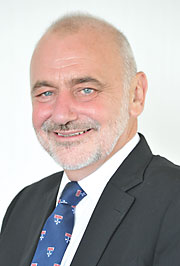
Meanwhile, colleges and universities in EduCity Iskandar, a 305-acre education cluster in Nusajaya, are welcoming their first students to their new campuses. Among the universities establishing branches in EduCity are the University of Southampton, Marlborough College, Netherlands Maritime Institute of Technology, Raffles University Iskandar and Newcastle University Medicine Malaysia (NUMed).
“We were looking to establish a physical presence that would extend the global reach of Newcastle University in Asia given patterns of global demand for higher education,” relates Professor Reg Jordan, CEO of NUMed, which specializes in medicine and biomedical science. Among the location factors that determined a Malaysia location, he says, were political stability and a legal framework similar to that of Great Britain. “Newcastle had a presence in Singapore already, but we were looking to plant a few large flags in a few strategic places for long-term growth.” The Malaysian government approached Newcastle in 2005 to solicit interest in an Iskandar location with incentives for establishing in the new economic region. “It fit the bill for us,” says Jordan. “It has close proximity to our interest in Singapore, and it fit with our international strategy.”
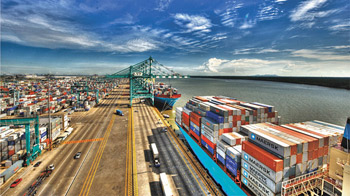
The 14-acre campus is custom designed to meet NUMed’s needs. Initially, NUMed will target Malaysian students but that will expand in the coming years to students from throughout in Asia. More than 200 students are enrolled this academic year, and that number will grow to about 1,000 within five years.
“We are here in Malaysia essentially for reputational gain, and to add value-added business through exploitation of the university’s intellectual property here and to offer undergraduate classes,” says Jordan. “Malaysia will benefit from an increase in the number of physicians, so we are helping them meet their demand for human capital. Countries like Malaysia aspire to become an international education destination in their own right. Bringing us here helps that initiative. We play into their agenda as well as our own.”
Malaysia’s Premier Biotech Park
Nusajaya is also home to Bio-XCell, Malaysia’s first dedicated biotechnology park, under development in the Southern Industrial and Logistics Cluster, which is Nusajaya’s flagship industrial development project. Investors from India, France and the United States are establishing new operations at Bio-XCell, which will feature a centrally located, multipurpose business hub as well as a centralized utilities facility providing specialized utilities for biomanufacturing and ready built factory shells which can be fit-out to investors operational needs. “Bio-Xcell is about partnership to optimize resources — from leveraging infrastructures, ecosystem for business and now developments in feedstock resources for biomanufacturing and bioprocessing uses to enhance commercialization value-creation, industry participation and economic growth,” says Rizatuddin Ramli, CEO of Bio-XCell.
“Proximity to India was one consideration when we opted for Malaysia,” says Kiran Mazumdar-Shaw, chairman and managing director of Biocon, a leading producer of insulin products based in India. “Water, infrastructure support and power cost were other key considerations. Malaysia offers us the most optimal combination of cost base and infrastructure support. Apart from this, the government is very supportive of high technology industries such as ours and has offered us a number of tax incentives.”

Agila Biotech Pvt. Ltd. is a wholly owned subsidiary of Strides Enterprise, one of the fastest growing specialty generics companies in India with a presence in 70 countries. The company is establishing its manufacturing facility at Bio-XCell to produce its own bio-therapeutic products and to perform contract manufacturing activities. “The purpose of setting up the facility at Bio-XCell is to leverage the support and assistance the Malaysian government and Bio-XCell park officials are providing in setting up the facility and to leverage the preferential access to ASEAN markets like Singapore and Thailand,” says Dr. Anand Iyer, Agila Biotech’s CEO. The Iskandar location will help us compete globally, he explains. “We feel that this is essential to Agila’s vision of becoming one of the leading biologics companies to emerge from India.”
Houston, Texas-based GlycosBio will break ground at Bio-XCell in early 2013 on a biochemical production facility that will produce a green or renewable chemical called isoprene — Bio-SIMTM (Bio-Based Synthetic Isoprene Monomer). Initially rated at 10,000 metric tons per year, GlycosBio is already planning an expansion of its Bio-XCell facility to 40,000 annual metric tons to meet isoprene market demand. Isoprene is a critical component of synthetic rubber and is globally in short supply. GlycosBio’s technology platform upgrades non-food and waste feedstocks, such as glycerin and fatty acid, into high-value specialty and intermediate chemicals. “Following the company’s first visit to Malaysia, we realized that Malaysia had all of the character traits required for success: feedstock, access to markets, a favorable business environment as well as a respect for intellectual property rights,” says Walter S. Burnap, president and CFO. GlycosBio will have a first-to-market advantage in the renewable isoprene market, notes Burnap. “The company’s Bio-XCell facility will be strategically located at both the gateway to the emerging synthetic rubber market as well as near an abundant supply of renewable feedstocks that are readily available in Malaysia.”
Production Campus Will Boost Malaysia’s Film Industry
Creative industries, too, have a new home in Iskandar Malaysia, most prominently at Pinewood Iskandar Malaysia Studios in the multi-purpose, 2,230-acre Medini development that features business parks, residential, healthcare and hospitality amenities among others. Pinewood, in the Media Village district, will house film stages, television studios and production facilities that will rival those of Hollywood and other signature entertainment centers worldwide.
“Creative content and communications is one of the government’s 12 key industries going forward, so this project fits nicely into what’s happening federally and in terms of the Iskandar development,” says Keith Martin, Medini’s CEO.
Can Malaysia make a name for itself in the film industry? Absolutely, says Pinewood CEO Michael Lake. “Malaysia has been totally undersold as a destination. It has a fairly vibrant film industry with more than 50 films released already this year, and 70 or 80 slated for next year.”
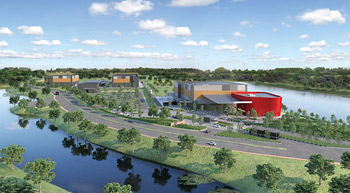
The country’s location in the heart of Asia makes it accessible to virtually every country in the region within five hours, and English is spoken widely, making it broadly appealing to the creative industries. Singapore is similar in those respects, but it lacks the land on which to develop new sites for growing industries, Lake points out. “We’re developing this facility on 80 acres. Malaysia wanted an iconic project that would help build this industry, and be a catalyst for the industry, but also for Malaysia. It’s a long-term strategy for the industry and for the country.” Both Iskandar Malaysia and Medini offer investment incentives, and the federal government offers a 30-percent “Film in Malaysia” production incentive.
Lake says the Pinewood campus will serve as a one-stop shop for producers, where facilities are centralized, and therefore more economical and convenient. Pinewood will offer film stage rental, television studio rental and fully integrated post-production facility for sound and vision. “Building stages from the ground up allows us to be cutting edge,” he adds. “We’re building a facility now where a producer can walk in with a script and walk away with a digital file of the completed production for either broadcast television or the cinema. We are designing the space with that in mind.”
Business to Business:
Minister’s Private-Sector Background Is a Boon to Clean-Tech Business Recruitment Efforts
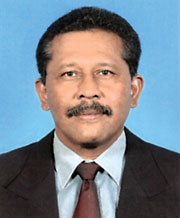
Negeri Sembilan is just an hour south of Kuala Lumpur and the Klang Valley, and closer still to KLIA, Malaysia’s international airport, giving it easy access to the capital and to logistics assets of keen interest to the many multinational companies operating in the state. These include Nestle, Coca Cola, 3M Asia Pacific, Emerson, Jotun and Philip Morris. Samsung operates its biggest facility outside of South Korea in the state. Since 2005, Negeri Sembilan has added nearly 230 manufacturing projects worth more than RM14 billion ($4.7 billion) in capital investment.
New investors will want to meet with Menteri Besar Inc. (MBI), part of the Negeri Sembilan Investment Centre (NSIC), which invests in joint ventures (land acquisition for industry, for example) with MNCs to generate returns that will benefit Negeri Sembilan’s populace. “We also coordinate the investment process and provide a one-stop center from selection of the site to approvals to assistance with licensing,” says Dato’ Mohamad Haslah Amin, MBI’s CEO. “We realize that they are not always familiar with the system here, which follows closely the English legal system. We want to help them begin doing what they do without any hindrances. We have demonstrated this capability time and time again.”
Combined, the tourism, agricultural and manufacturing sectors contribute to a state growth rate of about 5.5 percent, which Dato’ Haslah says often surpasses that of the federal government. Other targeted for expansion are aerospace, telecommunications, advanced electronics, renewable energy and biotech. “Our Chief Minister, Dato’ Seri Utama Mohamad bin Hasan, has been a pillar of growth, because he comes from the private sector, and his vision of economic growth since assuming that role in 2004 is coming to fruition.”
“Our Chief Minister, Dato’ Seri Utama Mohamad bin Hasan,
has been a pillar of growth, because he comes from the private
sector, and his vision of economic growth since assuming
that role in 2004 is coming to fruition.”
Dato’ Mohamad Haslah Amin, Menteri Besar Inc.’s CEO
Central to the state’s ability to attract so many MNCs is its infrastructure, which Dato’ Haslah says is being enhanced all the time. Several highways link state capital Seremban and environs to Kuala Lumpur and the Klang Valley industrial area, where as many as 100,000 workers commute every day. “We want to provide the work opportunities here, which is why our industrialization program says that by 2018, we should be able to provide about 75,000 job opportunities, provided we achieve a minimum of RM1.8 billion ($577 million) of investment per year. We will surpass that. Last year, we achieved about RM7 billion ($2.2 billion), so 1.8 billion is very achievable. This will provide ample opportunities to the work force here.”
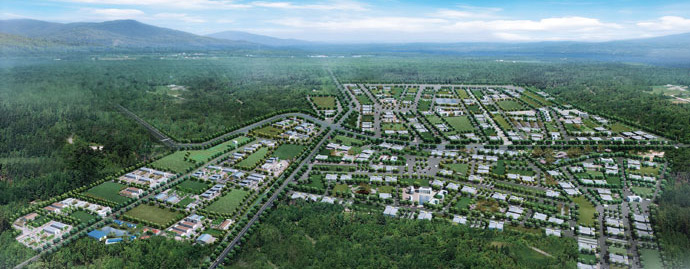
Meanwhile, their children benefit from an education infrastructure that includes eight universities, several smaller colleges, private schools and an international school that deliver on the Chief Minister’s commitment to making education a state priority. “His intention is to develop human capital,” says Dato’ Haslah.
Jotun (Malaysia) Sdn Bhd opened a new facility in Nilai, west of Seremban, in March 2011, where it produces solvent-based advanced protective coatings, marine paints and special tinters for the region. The plant employs about 100 workers.

According to Mr. Steve Meanwell, general manager of Jotun (Malaysia) Sdn Bhd, “Several factors were crucial in the selection of the Nilai site for the new plant, including its strategic location, good infrastructure, affordable land cost and adequate plot size, availability of an educated work force, professional and helpful government agencies, and proximity to the Nilai Inland port,” which facilitates exports, he explains. Additionally, the site is near the North South highway, allowing quick access to its facility in Shah Alam near Kuala Lumpur, KL city and its Singapore distribution hub. “The site chosen was a greenfield with no encumbrances. Construction was made easy and without delay. The factory was completed and started up on schedule. Close proximity to the North South highway has been beneficial to our supply chain operation, in terms of delivery performance, cost saving and efficiency.”
High-impact, high-income, clean-tech employers are the target tenants in Sendayan TechValley, a new business park just 15 kilometers, or 20 minutes, from KLIA.
MBI partnered with Matrix Concepts Group to develop 700 acres for industry on a 1,000-acre property southwest of Seremban in 2006. Today, the park is in its third phase of development with construction under way on several sites for tenants eager to start operations in the coming months.
“Our target is high-tech industries, and we have signed with five investors to date,” says Dato’ Lee Tian Hock, group managing director and CEO of Matrix Concepts Group. These include the Akashi Kikai Industry (Malaysia) subsidiary of Daihatsu Motor Corp., which will make electronic transmissions for cars, and a manufacturer of aircraft landing gear components. “We want industries that employ skilled workers, and we anticipate a working population at TechValley of 10,000 to 15,000. We discourage investment from industries requiring lower-skilled employees.” Dato’ Lee says Matrix recently signed a contract with Gas Malaysia to provide natural gas, which will lower tenant’s energy costs by 30 percent to 40 percent relative to electricity. “This will add premium value to the park, and I expect more industry will come knowing we have that capability.”
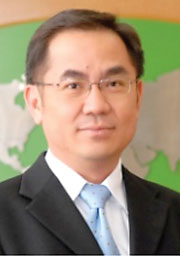
Elsewhere in Negeri Sembilan, ON Semiconductor (Malaysia) Sdn Bhd operates a facility on the Senawang Industrial Estate in Seremban, where it benefits from the area’s many logistics advantages. “Logistics, the ease of moving goods in and out, is the main factor that attracts companies to Malaysia,” says CS Tan, general manager. “You can compare Malaysia with any other country on this point, except Singapore, which is quite small. The other main draw is social stability and environmental stability with no typhoons, earthquakes or volcanoes — not even snowstorms,” he quips. “And we have the lowest insurance rates here of any of our factories worldwide.”
In Seremban, ON Semiconductor employs about 2,700 workers — 2,000 directly, says Tan. Hiring highly skilled workers sometimes requires casting a wider net than the Negeri Sembilan and Kuala Lumpur regions — from the Philippines, Thailand and Europe, he relates. “Most of the direct employees we hire locally, but about 15 percent are from Indonesia. Malaysia is moving up the value curve, and if we are to do that quickly, then we cannot depend solely on the pool of talent we have in this country. Some skills are hard to find locally, such as design and electrical simulations.” Still, the journey up that learning curve is well under way, with more R&D work being conducted in Malaysia than ever before.
“Our facility in Seremban is the center of R&D for semiconductor packaging — we design, develop, prototype and produce the packaging here,” says Tan, adding that the facility represents a significant percentage of the company’s revenue base. “In terms of product mix and complexity, this is by far ON Semi’s highest mix factory — every single package platform is built here.” Another fab plant nearby with about 500 workers produces about 25,000 simple-circuit six-inch wafers per week.
“We are significant to ON Semiconductor due to our engineering talent and cost competitiveness,” says Tan. “The engineers here have the right skill sets and the leadership abilities we require. And Malaysia still is very cost competitive. Though wages are going up, and our currency has appreciated too relative to the U.S. dollar, but we have managed to maintain the input costs as a percentage of total production costs. They remain flat, which is a good sign.”
Solar Powered:
PKNS Plans a Solar Valley In Its New Science Park, Plus Iconic Residential Projects in Selangor
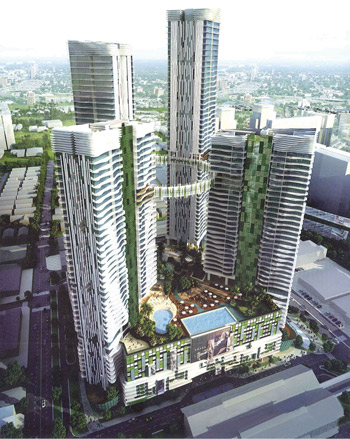
Selangor’s location surrounding Kuala Lumpur makes it a logical destination for companies benefitting from close proximity to the federal capital and its government complex in Putrajaya, south of the city. They also have nearby access to the ports and free zone at Port Klang, Sultan Abdul Aziz Shah Airport at Subang with easy passenger service throughout the region and several industrial parks, including Selangor Science Park 2 in Cyberjaya, a 1,300-acre master-planned development just 15 minutes from KLIA (the main international airport in Malaysia), for those requiring global air transport. SSP2 is modelled after Selangor Science Park 1 in Kota Damansara.
“[Solar cell manufacturer] Q-Cells from Germany was our first investor on a 63-acre site in what we are turning into our Solar Valley,” says Norzila Sidek, Business Development Head of Selangor State Development Corporation (abbreviated PKNS for its Malaysian name, Perbadanan Kemajuan Negeri Selangor), the principal state agency charged with promoting socio-economic development in Selangor. “We are inviting companies that produce solar panels and other high-tech industries to Selangor Science Park 2.
This location is just 15 minutes from KLIA and is next to Putrajaya, the new federal government complex, and Cyberjaya [a new high-tech district home to many global IT companies]. And it is connected to all the major highways in the country.” Proximity to Kuala Lumpur International Airport saves investors from overseas from having to connect on to destinations elsewhere in Malaysia, she elaborates. And it is a major draw to an aerospace company that is close to committing to a site in the park.
Selangor Science Park 2 will be home to more than solar companies. Plans call for residential, commercial, leisure and other components that will create a new urban center that is sustainable and self-contained with centralized water treatment, water and power supplies.
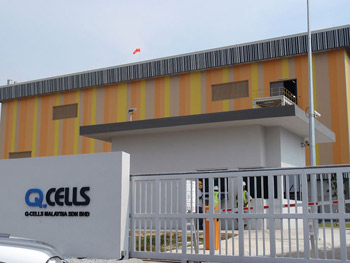
Selangor contributes a fifth of Malaysia’s GDP and is home to more than 130 colleges and universities that produce about 10,000 knowledge workers per year and 30 international schools, including those in Kuala Lumpur proper.
Companies in industries outside the clean-tech sectors PKNS targets that are looking to expand in Selangor or to invest there will work with the Selangor State Investment Centre, which will work with MIDA to see that all appropriate incentives are made available and permit requests are handled expeditiously. It is the state’s one-stop resource for assistance with permits, construction issues and other pre- and post-operations matters.
PKNS meanwhile is moving forward with several iconic projects, most notably Datum Jelatek, a mixed-use development with retail and four residential towers linked at high floors by a pedestrian Sky Ring.
When complete, the project will add a new landmark to the greater Kuala Lumpur skyline and remind visitors to the capital region that much of the area’s future lies outside the central business district. Interested parties may contact PKNS Business Development at + 603 5520 1234 or visit company’s website at www.pkns.gov.my.
We’re Being Transferred to Kuala Lumpur?!
It could happen. Many expats and their families are glad it did.
Kuala Lumpur is Malaysia’s capital city and business hub, but it is quickly emerging as a regional commercial and tourism center and a key destination for direct investment from Japan, China, South Korea and points more distant.
In March, property investment firm IP Global named Kuala Lumpur one of its top three real estate investment markets, along with London and New York, in its Property Barometer report. Factors behind this include a strong and open Malaysian economy with 5.3-percent growth in 2011; Nomura Research ranked the country as having the third most open economy in Asia.
Add affordability to strong and rising property values and Kuala Lumpur emerges as a hard-to-beat destination for multinationals and the employees tasked with locating there. Mercer’s most recent Worldwide Cost of Living Survey places KL in 102nd place — about midway in its ranking of 214 world cities, far behind other Asian metros, such as Tokyo (in first place), Singapore (6th), Hong Kong (9th) and Seoul (22nd).
“We chose Malaysia as its multi-lingual
and skilled work force is ideal for our regional
and global support services.”
John McCabe, senior vice president, PayPal
Investors who have made the move to Malaysia’s capital cite its supply of knowledge workers and close cooperation on the part of the government before, during and after establishing operations. The federal government is aggressively promoting Kuala Lumpur as one of its National Key Economic Areas — the only city on the list, so foreign direct investors will find no shortage of resources or real estate when they begin their location analysis. More than 2 million square feet of new space is due to come online in the next year in the city proper and 4 million square feet outside the central business district, according to Newmark Knight Frank. Cushman & Wakefield research estimates new supply in Kuala Lumpur to be about 30 percent of inventory through 2013, the fifth highest of 20 Asian markets analyzed in its Global Office Forecast, issued in December 2011. But available real estate is not the main reason multinationals are choosing the Kuala Lumpur area for new operations.
“We selected Malaysia for our newest facility based on the strong public-private partnership with the country and Cyberjaya, its competitive business model and the talent and skills that the Malaysian people have to offer,” says Craig Tucker, director of the IBM Global Delivery Center in Cyberjaya, 25 kilometers south of the central business district. “The global delivery centers are a major component of IBM’s strategy to be a globally integrated enterprise, which allows us to perform work anywhere in the world where the right skills and the right environment for business to drive profitable growth. Our new center in Cyberjaya is now a core component of that global network. We believe it will be a model the delivery of technology services, and just as importantly, it will be a role model for a public-private partnership that creates new opportunities for Malaysians.”
John McCabe, senior vice president, worldwide operations, at PayPal, explains his company’s selection of Kuala Lumpur for its regional hub: “We chose Malaysia as its multi-lingual and skilled work force is ideal for our regional and global support services. Our regional center in Kuala Lumpur offers service and support for customers across Southeast Asia. It also provides operational support for our global payment service.”
Infrastructure Facilitates Local, Regional and Global Connectivity
Many Westerners would be hard-pressed to find it on a map, but Kuala Lumpur is moving quickly to change that with iconic developments, such as KL Metropolis, that will give the city’s signature Petronas Towers some skyline competition and business and leisure visitors even more reason to explore its business locations, local neighborhoods and numerous tourist spots — and transport infrastructure that surpasses that of many North American metros. (This reporter is a particular fan of the KLIA Express train — clean, prompt and cheap — that whisks arriving passengers from KL’s international airport to the Sentral area’s hotels and business district in just 28 minutes. New York? Los Angeles? Toronto? Pay attention.)
Speaking of the airport, KLIA is truly state-of-the-art, and as busy as it is, it never seems overcrowded. Domestic travelers and some regional ones have a second air-travel option in Subang Airport, the city’s earlier international airport that could never have handled today’s volume of visitors to this bustling metropolis. KL’s metro system, too, rivals that of any other Southeast Asian city in its facilities, cleanliness and breadth of urban reach. New highways connect the capital to points throughout Malaysia quickly and comfortably. And housing at all levels is readily available, with more residential options becoming available all the time. Like any city, it’s pricier to live in the central city, but Kuala Lumpur has numerous attractive suburbs that are easily accessible to the central city and its many amenities.
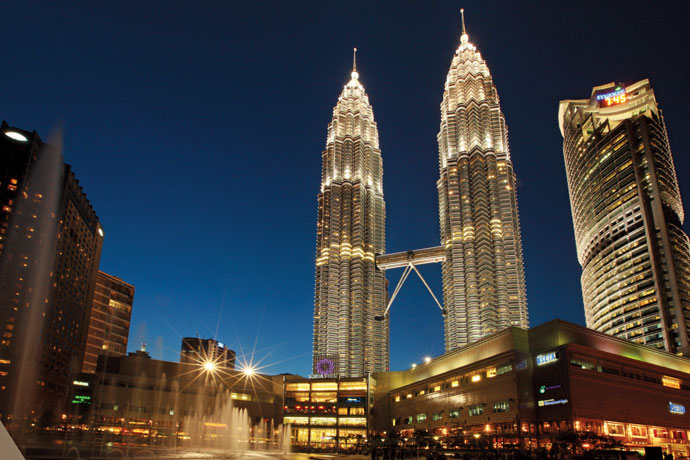
That’s why once foreign executives — and their families — get there on assignment from their MNC based in Munich or Memphis or Montreal, they quickly acclimate. And the climate’s not hard to handle unless they will miss snow skiing, which will not be available anywhere in Malaysia, and certainly not in Kuala Lumpur. The climate is tropical all year, a fact one is reminded of at every turn by the lush greenery always in view.
What’s it really like for expats relocating to a city in Asia they have maybe heard of, but not necessarily? Andy Davison, CEO of The Expat Group in Kuala Lumpur, filled in some blanks.
Perception Is Not Reality
“Most expats who are unfamiliar with Malaysia usually think the country is much less developed than it actually is,” says Davison. “The reality is that for the last 25 years it has been undergoing fairly constant, rapid development. Malaysia is still not as well known as some Asian countries like Hong Kong, Singapore and Thailand. The problem of lack of awareness has been compounded by some negative and often misleading articles about Malaysia in the international press. The increased focus on tourism and the corresponding, substantial increase in tourist arrivals means more people have now seen first-hand what Malaysia has to offer and that is helping build awareness of the country and a more positive image.”
Are executives and their families anxious about relocating to so exotic a destination, by Western standards? “I suspect many people are apprehensive,” says Davison. “I think anxious is too strong a term. Because it is an Islamic country, some people assume there will be a lot of restrictions even to the extent of people asking if they can buy alcoholic drinks here. Expats from the United States, which has little coverage about Malaysia and not that many tourists, are often the most apprehensive. The Internet allows people to get quite a good picture, and our websites get many hits from people around the world seeking more information. We also receive many enquiries from people planning to move here. Common questions are about the cost of living (low), international education (good) and places to live (good selection).
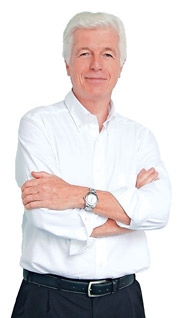
“The majority of expats are pleasantly surprised on arriving in KL to see how modern and developed the city has become,” Davison relates. “The many shopping malls, restaurants and bars together with the wide availability of many imported products enable most of them to feel comfortable fairly quickly. The people who have the biggest problem adjusting are those expats who have trouble wherever they are, because they miss their home country or friends and relatives. They often are reluctant to mix and explore new things. You meet these types in every country.
In the last 20 years, there have been many new apartment complexes offering excellent facilities — swimming pool and gym are fairly standard but also attractive gardens, tennis courts, badminton, squash, children’s play areas, running tracks, BBQ pits and party areas are also becoming more common.”
Davison says most expats’ biggest surprise is the attractive lifestyle — great tourist destinations, good weather and the overall level of development. The constantly improving infrastructure — new property developments, shopping malls, highways, hospitals and schools (see the guide to international schools) — are also a major positive, he says.
Many expats are content to stay on once their corporate assignments are complete,” he relates. “We have found an increasing number of expats want to stay on when their assignments end and many more who come here looking for work. The recent liberalization of the rules regarding issuing work permits together with the availability of the 10-year Residents Pass have made it easier to stay longer. Many expats choose to buy property here as the rules on foreign ownership are more liberal than many other countries in Asia, and prices are competitive.”
